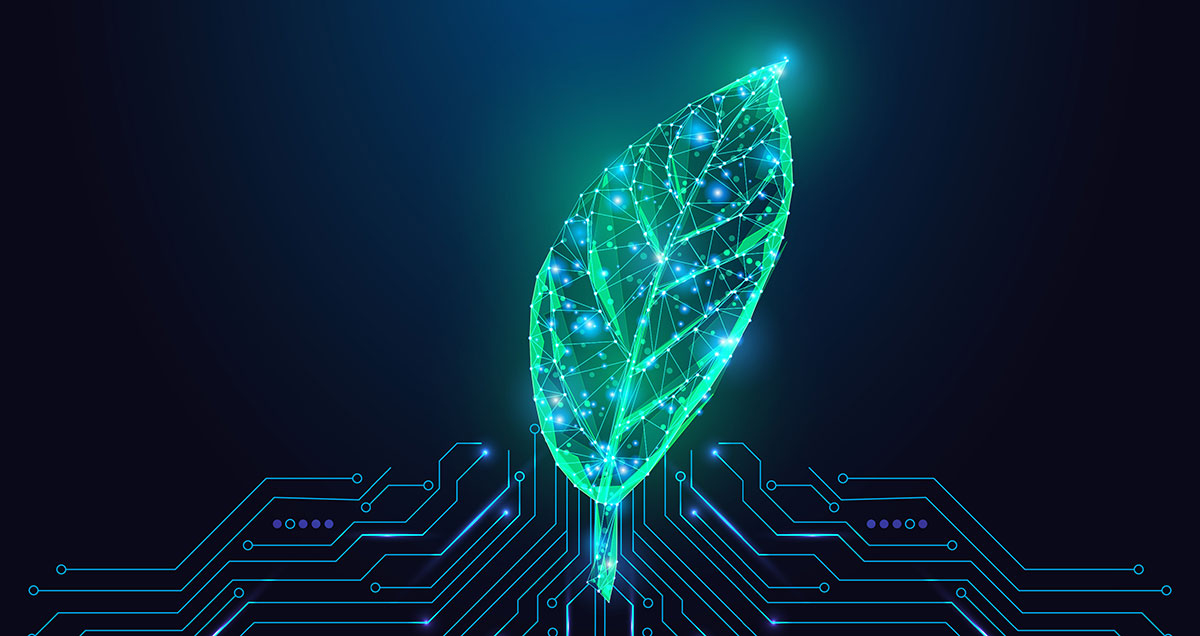When most people think about artificial intelligence (AI), they picture self-driving cars, chatbots, or maybe even futuristic robots. But one of the most exciting uses of AI is happening right now in the world of clean energy and sustainability. Across the globe—and right here in the South—AI is helping us fight climate change, use resources more wisely, and build smarter systems that support a greener future.
The reality is simple: the challenges of climate change are too big to tackle with human effort alone. We need technology that can analyze massive amounts of data, predict patterns, and make real-time decisions. That’s where AI steps in.
Smarter Energy Grids for Smarter Cities
One of the most powerful ways AI is being used is in managing our energy grids. Traditional power grids were designed for one-way energy flow, from large power plants to homes and businesses. But with solar panels, wind farms, and battery storage now in the mix, the grid has become much more complex.
AI helps balance supply and demand by predicting energy use and automatically shifting power where it’s needed most. For example, if a city is generating extra solar energy during the day, AI can direct that surplus into storage systems or send it to neighborhoods with higher demand. This prevents waste and makes renewable power more reliable.
Here in the South, where extreme heat waves can strain the grid, AI-powered systems can reduce blackouts by forecasting peak demand and managing energy more efficiently. Smarter grids mean cleaner, more dependable power for everyone.
Optimizing Renewable Energy Production
AI is also changing the way we operate renewable energy sources themselves. Solar farms and wind turbines generate power based on the weather, which can be unpredictable. But AI systems can analyze weather forecasts, satellite data, and historical trends to predict how much energy will be produced.
By using these insights, operators can plan ahead, store energy when it’s abundant, and prepare backup systems when supply may fall short. This not only maximizes efficiency but also reduces costs. In a region like the South, with plenty of sunshine and growing interest in solar farms, AI is helping unlock the full potential of renewable resources.
Reducing Waste in Industry and Agriculture
Beyond energy, AI is helping industries and agriculture become greener. Factories can use AI to monitor equipment, detect inefficiencies, and reduce unnecessary energy use. This lowers both emissions and operating costs.
In agriculture—a big part of the southern economy—AI-powered sensors and drones are helping farmers monitor soil health, track water usage, and apply fertilizer more precisely. This approach, often called “precision farming,” reduces waste, increases crop yields, and cuts down on harmful runoff into rivers and wetlands. It’s a clear example of how technology can protect natural resources while supporting local livelihoods.
AI and Climate Research
Another exciting role AI plays is in climate science itself. The amount of data generated by satellites, weather stations, and research labs is overwhelming, but AI can process it in ways humans can’t. This means more accurate models of climate change, better predictions of extreme weather, and stronger planning for future risks.
For southern states prone to hurricanes, floods, and heat waves, AI-powered climate models help communities prepare and adapt. Local governments can use this information to strengthen infrastructure, protect vulnerable populations, and invest in long-term resilience strategies.
Smarter Transportation and EV Growth
Transportation is one of the largest sources of carbon emissions, but AI is helping make travel cleaner and more efficient. From traffic management systems that reduce congestion to AI software that improves electric vehicle (EV) charging networks, smart tech is transforming mobility.
In southern cities, where commuting is a daily reality, AI can optimize traffic signals to cut idle times and emissions. For EV drivers, AI systems can suggest the best routes, locate available chargers, and even predict when batteries should be charged to take advantage of lower energy costs. This not only makes EV ownership easier but also helps integrate clean transportation into city life.
Everyday Sustainability Through AI
It’s easy to think of AI as something distant or only for large industries, but it’s also part of everyday sustainability. Smart home devices that adjust thermostats, manage lighting, and track energy use rely on AI to cut waste. Even music streaming platforms and travel apps are beginning to highlight greener choices, powered by AI algorithms.
When individuals and families use these tools, the impact may feel small. But when multiplied across millions of households, AI-powered decisions can add up to major environmental benefits.
Challenges and Responsibility
Of course, AI isn’t a silver bullet. These systems require energy to run, and if that energy isn’t renewable, the benefits can be reduced. There are also important conversations to be had about data privacy and the ethical use of AI.
But if we approach AI responsibly, focusing on transparency and clean power, the opportunities far outweigh the challenges. By combining human creativity with the processing power of smart technology, we can find new solutions to old problems and accelerate the transition to a sustainable future.
Technology With Purpose
When I look at how AI is shaping the world, I see a future where technology and sustainability go hand in hand. We don’t need to choose between innovation and the planet—we can have both. The key is to use AI with purpose, directing its power toward building cleaner systems, reducing waste, and protecting our communities.
For the South and beyond, this means smarter cities, stronger economies, and a healthier environment. AI may not solve climate change on its own, but it gives us a powerful tool to fight it. And if we use it wisely, we can create a future that’s not only smarter but also greener.
